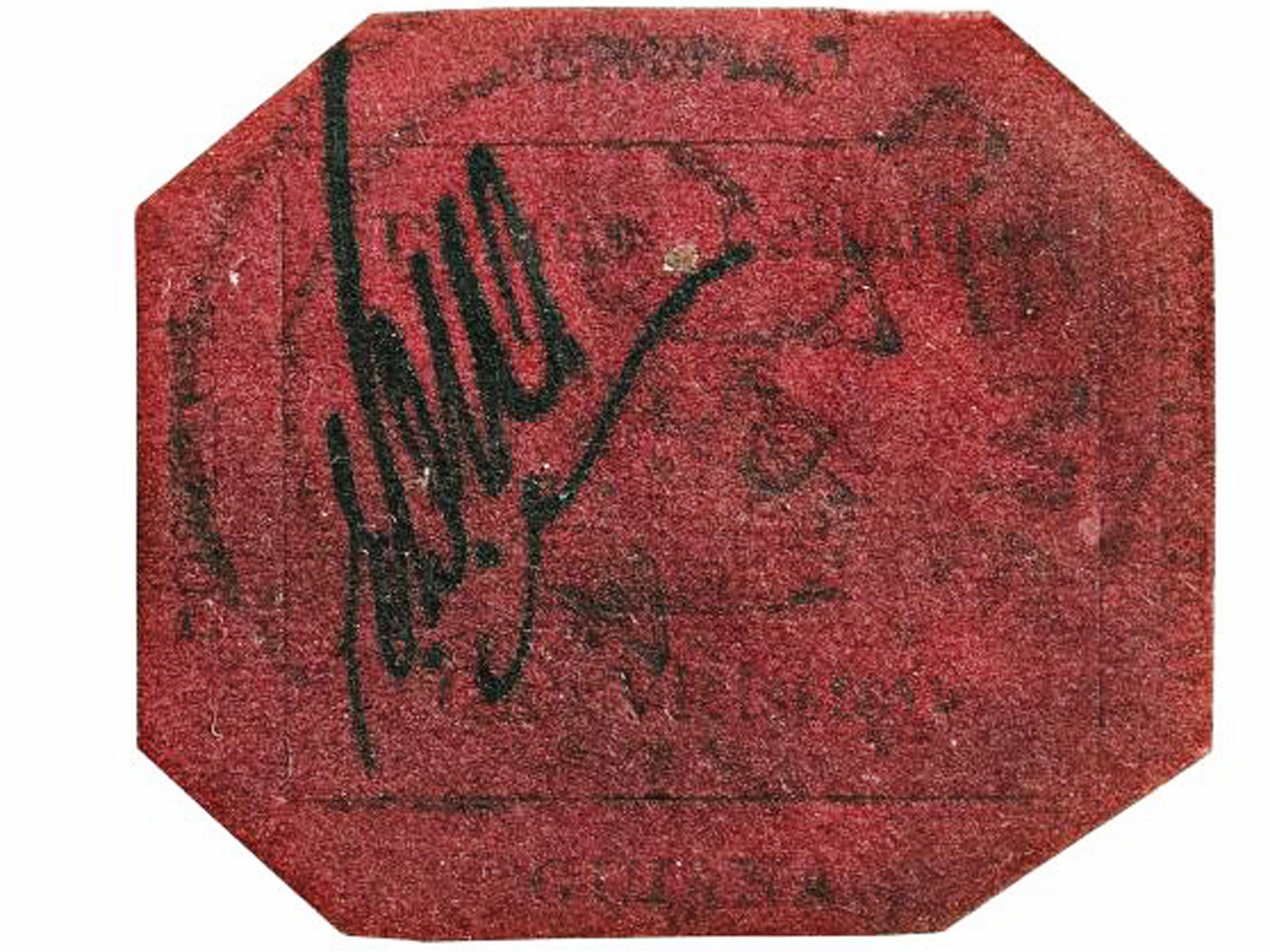Stamp collecting: Truly, frankly, deeply
As the world's most famous stamp is set to sell for a likely £12m at Sotheby's, Emma Townshend explains the grand allure of collecting for 'paper-stroking freaks' such as herself

Your support helps us to tell the story
From reproductive rights to climate change to Big Tech, The Independent is on the ground when the story is developing. Whether it's investigating the financials of Elon Musk's pro-Trump PAC or producing our latest documentary, 'The A Word', which shines a light on the American women fighting for reproductive rights, we know how important it is to parse out the facts from the messaging.
At such a critical moment in US history, we need reporters on the ground. Your donation allows us to keep sending journalists to speak to both sides of the story.
The Independent is trusted by Americans across the entire political spectrum. And unlike many other quality news outlets, we choose not to lock Americans out of our reporting and analysis with paywalls. We believe quality journalism should be available to everyone, paid for by those who can afford it.
Your support makes all the difference.Last November, when the current price record-holder for a single stamp changed hands, true believers could view the news only one way – with joy. "The Treskilling Yellow is back in the hands of a philatelist," Stamp Magazine's Julia Lee reported, exultantly, "after years in the hands of dealers, investors and banks." Her sentiments were echoed across the stamp world. "I find this a strangely heartwarming story!" crowed one thread user, a bit bemused at his own glee, as the rarity was snapped up by the not obviously heart-warming figure of aristocrat philatelist Count Gustaf Douglas (billionaire head of the Swedish monitoring and investigation firm Securitas).
It's easy to caricature stamp collectors as qualifying among the world's nerdiest freaks: paper-stroking weirdos, really. But the world of stamps is also about passion, beauty and delight. This week, Sotheby's announced plans to bring to auction the British Guiana one-cent magenta, likely to fetch around $20m (£12.1m), making it the most expensive object ever sold for its size (an inch and a quarter by an inch). To collectors, this is undoubtedly the world's most famous stamp; to the rest of the planet's population, it's a fairly unappealing, dirty-looking piece of dark red paper with a ship on it. But here I must come clean: I'm slightly in the paper-stroking weirdo camp myself.
Stamps have a kind of quiet, perfect poise to them. They speak of our desire to communicate, our desperate need for contact; and, at the same time, they are completely mute. Stamps date from the moment where we were catapulted into the modern communication world, as it became possible for Virginia Woolf, for example, to write a morning postcard to her husband Leonard at the office, asking him if he'd be home for dinner; and to receive a reply in useful time for Cook to get started. Yet they cannot tell us anything about the letter they came from, of death, marriage and birth news that they carried.
The grand allure of stamps often leads to strong feelings. Love motivates much stamp collecting even if, yes, it probably is more of a John Fowles, obsessive lock-you-up-type of love than your regular affair off Match.com. And, of course, as with any highly valuable objects, there's forgery, double-dealing and general skulduggery galore. When Simon Garfield wrote about his stamp-collecting habit in his book, The Error World, in 2008, it seemed no surprise that his period of most reckless and obsessive buying coincided with the affair that ended his marriage. I couldn't quite identify with Garfield's passion for the particularly odd group of rare stamps known as "errors", all created by malfunctions during printing; I definitely understood his sense of stamps' calm beauty.
Yet it is likely that the British Guiana stamp will sell eventually not to a stamp-lover, but to an investor. Since the world financial crisis in 2008, money has slunk away from the stock markets, seeking other ways to reproduce itself, finding new and increased value in gold, but also in other luxurious and rare physical goods. These range from secure car parking spaces in the London borough of Kensington and Chelsea, to cases of premier cru Pauillac clarets (causing prices to rise by hundreds of per cent, and sparking intense moaning among those who want to actually drink the stuff).
The British Guiana stamp's motto reads Damus Petimus Que Vicissim – "we give and expect in return". Most millionaire investors would have exactly these sentiments in mind when handing over huge sums for this tiny piece of paper at auction. Having scrutinised records of prices paid for unique stamps, and seen the massive hikes in values, they'll be betting on their own huge returns. The stamp has always been valuable. Even in 1922, it set its new owner back an eye-watering £36,000. But investor or philatelist, when its eventual buyer takes possession, I will find myself wondering: just what was written in that letter?
Join our commenting forum
Join thought-provoking conversations, follow other Independent readers and see their replies
Comments